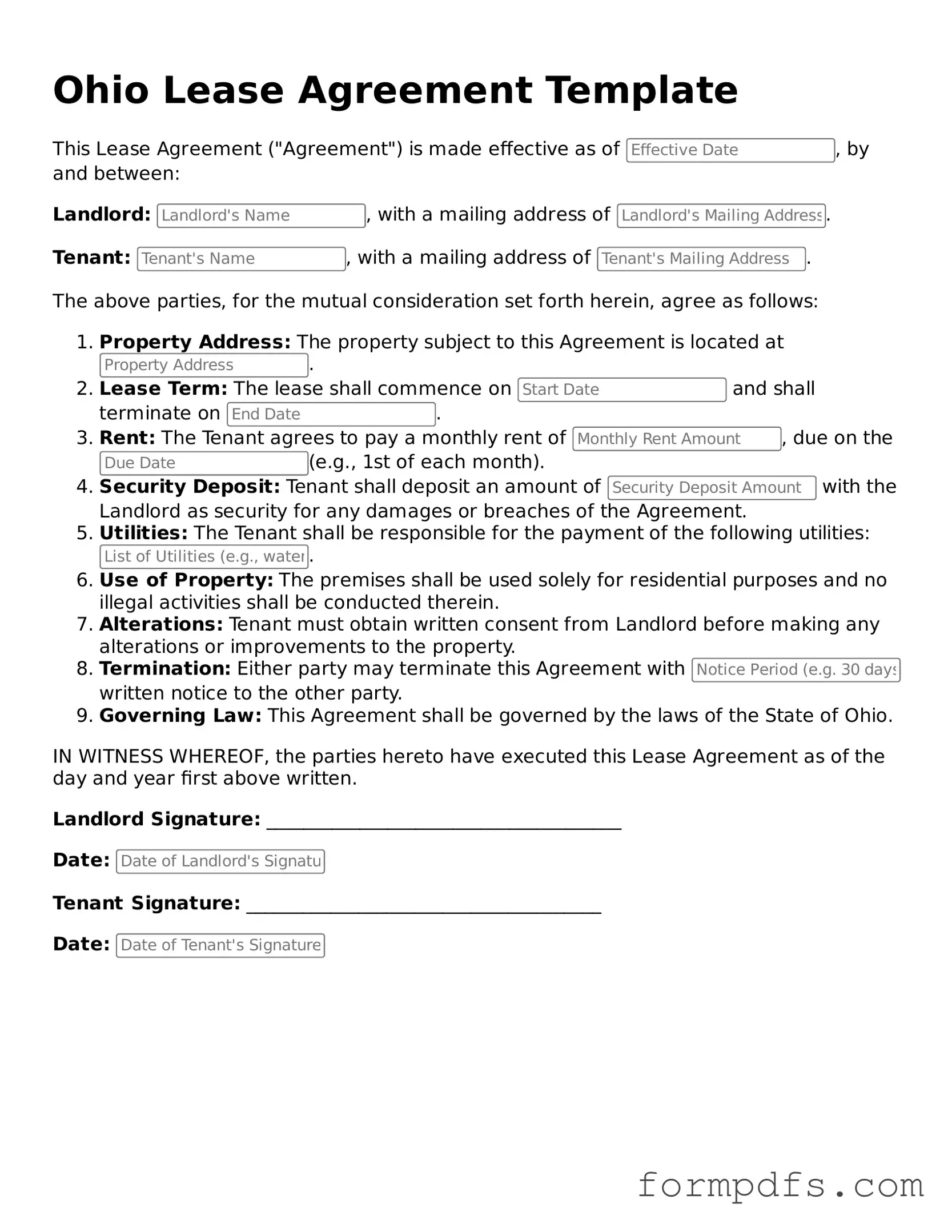What is an Ohio Lease Agreement?
An Ohio Lease Agreement is a legal document that outlines the terms and conditions under which a landlord rents property to a tenant. This agreement includes important details such as the duration of the lease, rental amount, security deposit, and responsibilities of both parties. It serves to protect the rights of both the landlord and tenant, ensuring everyone understands their obligations.
What should be included in an Ohio Lease Agreement?
Essential elements of an Ohio Lease Agreement include the names of the landlord and tenant, the address of the rental property, the lease term (fixed or month-to-month), the rent amount and due date, security deposit details, and maintenance responsibilities. It's also wise to include clauses about pets, smoking, and termination conditions. Clear terms help prevent misunderstandings later on.
How long does an Ohio Lease Agreement last?
The duration of an Ohio Lease Agreement can vary. Many leases are for one year, but they can also be shorter or longer. A month-to-month lease is another option, allowing for more flexibility. It's important to specify the lease term in the agreement so both parties know when it starts and ends.
Can a lease be terminated early in Ohio?
Yes, a lease can be terminated early in Ohio, but it usually requires a valid reason. Both parties should review the lease terms for any early termination clauses. Common reasons for early termination include job relocation, health issues, or unsafe living conditions. If a tenant needs to break the lease, they should communicate with the landlord to discuss possible solutions.
